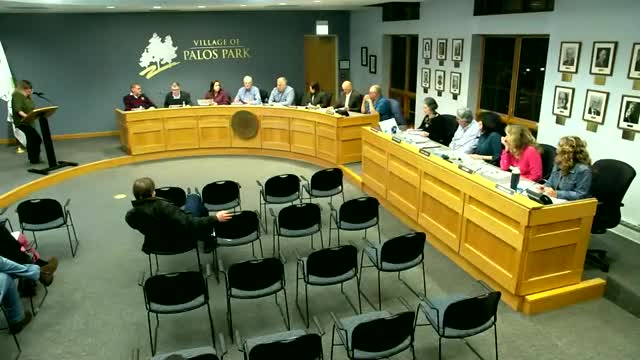Palos Park clarifies accessory structure rules and limits guest room definitions
March 23, 2025 | Palos Park, Cook County, Illinois
This article was created by AI summarizing key points discussed. AI makes mistakes, so for full details and context, please refer to the video of the full meeting. Please report any errors so we can fix them. Report an error »

In the heart of Palos Park, a recent joint meeting of the Plan Commission and Zoning Board of Appeals sparked a lively discussion about the evolving regulations surrounding accessory structures in the village. As members gathered under the bright lights of the community hall, the air buzzed with questions about how these changes would impact residents' property rights and living arrangements.
One of the key topics was the introduction of new regulations regarding accessory buildings, which have seen significant updates. Board members expressed a desire to understand the historical context of these changes, noting that several regulations have shifted to enhance property use without imposing undue restrictions. The conversation highlighted the addition of provisions for solar panels, a reflection of the community's growing interest in sustainable living.
However, the discussion took a more nuanced turn when the topic of accessory dwelling units (ADUs) arose. A board member sought clarification on whether these units would be permitted under the new definitions. The response was clear: ADUs remain prohibited in Palos Park. The intent behind the new accessory structure definitions is to allow for limited guest accommodations, such as a studio or guest room for family members, but not to create full living spaces with kitchens or bathrooms.
The regulations specify that while a kitchenette may be allowed, a full bathroom is not. This means that any detached structure, whether it be a pool house or an office, cannot include a full bath—only a half bath with a toilet and sink. This distinction aims to maintain the village's character while providing some flexibility for residents.
As the meeting wrapped up, it was evident that the board is committed to balancing the needs of the community with regulatory clarity. The discussions not only shed light on the current state of accessory structures but also set the stage for future considerations as Palos Park continues to evolve. Residents left the meeting with a clearer understanding of how these regulations will shape their property use, fostering a sense of engagement and anticipation for what lies ahead.
One of the key topics was the introduction of new regulations regarding accessory buildings, which have seen significant updates. Board members expressed a desire to understand the historical context of these changes, noting that several regulations have shifted to enhance property use without imposing undue restrictions. The conversation highlighted the addition of provisions for solar panels, a reflection of the community's growing interest in sustainable living.
However, the discussion took a more nuanced turn when the topic of accessory dwelling units (ADUs) arose. A board member sought clarification on whether these units would be permitted under the new definitions. The response was clear: ADUs remain prohibited in Palos Park. The intent behind the new accessory structure definitions is to allow for limited guest accommodations, such as a studio or guest room for family members, but not to create full living spaces with kitchens or bathrooms.
The regulations specify that while a kitchenette may be allowed, a full bathroom is not. This means that any detached structure, whether it be a pool house or an office, cannot include a full bath—only a half bath with a toilet and sink. This distinction aims to maintain the village's character while providing some flexibility for residents.
As the meeting wrapped up, it was evident that the board is committed to balancing the needs of the community with regulatory clarity. The discussions not only shed light on the current state of accessory structures but also set the stage for future considerations as Palos Park continues to evolve. Residents left the meeting with a clearer understanding of how these regulations will shape their property use, fostering a sense of engagement and anticipation for what lies ahead.
View full meeting
This article is based on a recent meeting—watch the full video and explore the complete transcript for deeper insights into the discussion.
View full meeting
